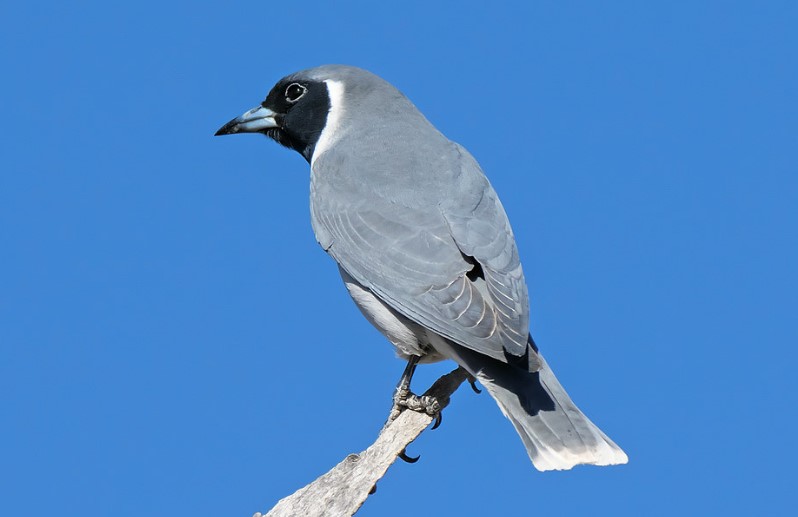A Masked woodswallow belongs to the family Artamidae. This is one of two Australian woodswallow species that flock in large numbers. In autumn, the bird makes long nomadic flights north across the continent to feed, and in spring, it makes its way south to breed.
Whitebrowed woodswallows are the other ones. Masked birds are predominant over the western two-thirds of the continent; both live in flocks of hundreds or more. By chirping continuously, flocks maintain their unity.
After catching their insect food and eating on the wing for hours, they may suddenly swoop into tree foliage to rest or gather nectar and insects. Colonies nest, but not communally, and the birds do not cluster-roost at night. Blue Martins, Bush Martins, and Skimmers are some other names for the bird.

A Masked Woodswallow measures approximately 190-200 mm long. Male birds have plain mid-grey upper parts and white tail tips. The face, forehead, and throat are black, with a white edge. The underparts and underwings are pale greys. There is a pale blue bill with a black tip and dark brown eyes. Black mealy feet.
Females have a dusky face and throat, and vinous gray underparts. There are fine speckles of cream-white on the upper parts of the body and face of the immature. Masked Woodswallows call with a high, descending chirrup when in contact; chauering when mobbing. The song of the Masked Woodswallow is soft and twirling, accompanied by miming.
Breeding and nesting season lasts from August to December. Migratory species that breed exclusively in pairs. The breeding season usually occurs during spring and summer but can vary from year to year. There is usually one breeding per year, but sometimes there are two.
Nests are shallow shallow bowls that are built from twigs, grass stems, and rootlets, usually one to two meters above ground, on stumps and fence posts. Nests are built by both sexes. A pair of white eggs are laid by the bird.
The eggs measure about 22 x 17 mm and are purple-brown with gray blotches. There is a 12-day incubation period for both sexes. Throughout the western two-thirds of the continent, the mask woodswallow inhabits open woodlands; it is erratic east of the Great Dividing Range. Generally, it breeds south of Barkly Tableland and Kimberleys, moving nomadically north-south. Read More – Masked Tityra “Tityra semifasciata”







